
Mark in Paris
[Purist]
10488

The 2016 Patek Philippe 5204R hands-on review
Hello everyone,
Among the new pieces presented by Patek Philippe this year at Baselworld, there was a watch that I considered my favorite from this cuvée: the 5204R with Perpetual Calendar and Split-Second Chronograph.
Not only does it house one of the finest calibers from the brand in terms of finishing, engineering and movement but it is also, to me, the most appealing from the 5204 family that was launched for the first time in 2012. This is the perfect occasion to come by this very rare bird that fuels the interest of many watch enthusiasts. It is a wonderful complicated piece and brings forward all Patek’s legacy regarding chronograph complications to a new era.
The 5204R on the left, next to the 5170R silver dial presented in 2016 as well...
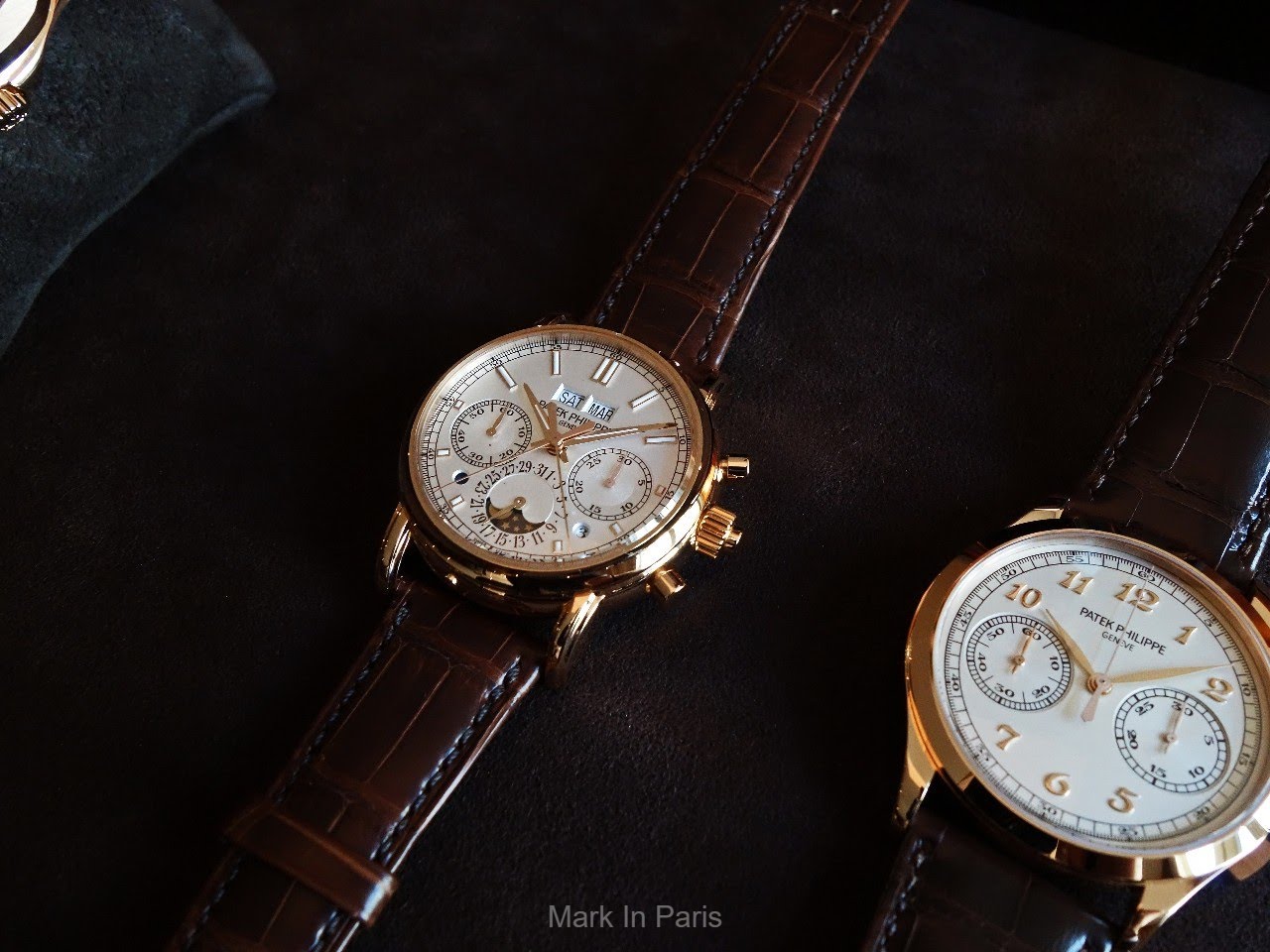
THE CASE AND DIAL
As you may remember, the watch was already proposed in platinum with either silvery (discontinued) or black dial. Since the last Baselworld fair, the rose gold version brings the watch in a totally new lighting. Indeed, it is much warmer that way and it hence gives this little vintage and retro feeling I like very much and that suits the piece particularly well. I think the choice of gold material brings so much more evolution to a watch than a simple switch from a color to the other. As far as I’m concerned, there are some watches I like in white metal and others exclusively in rose gold (usually simpler watches). Here, I’m totally sold to the R while I wasn’t attracted that much by the Pt versions.
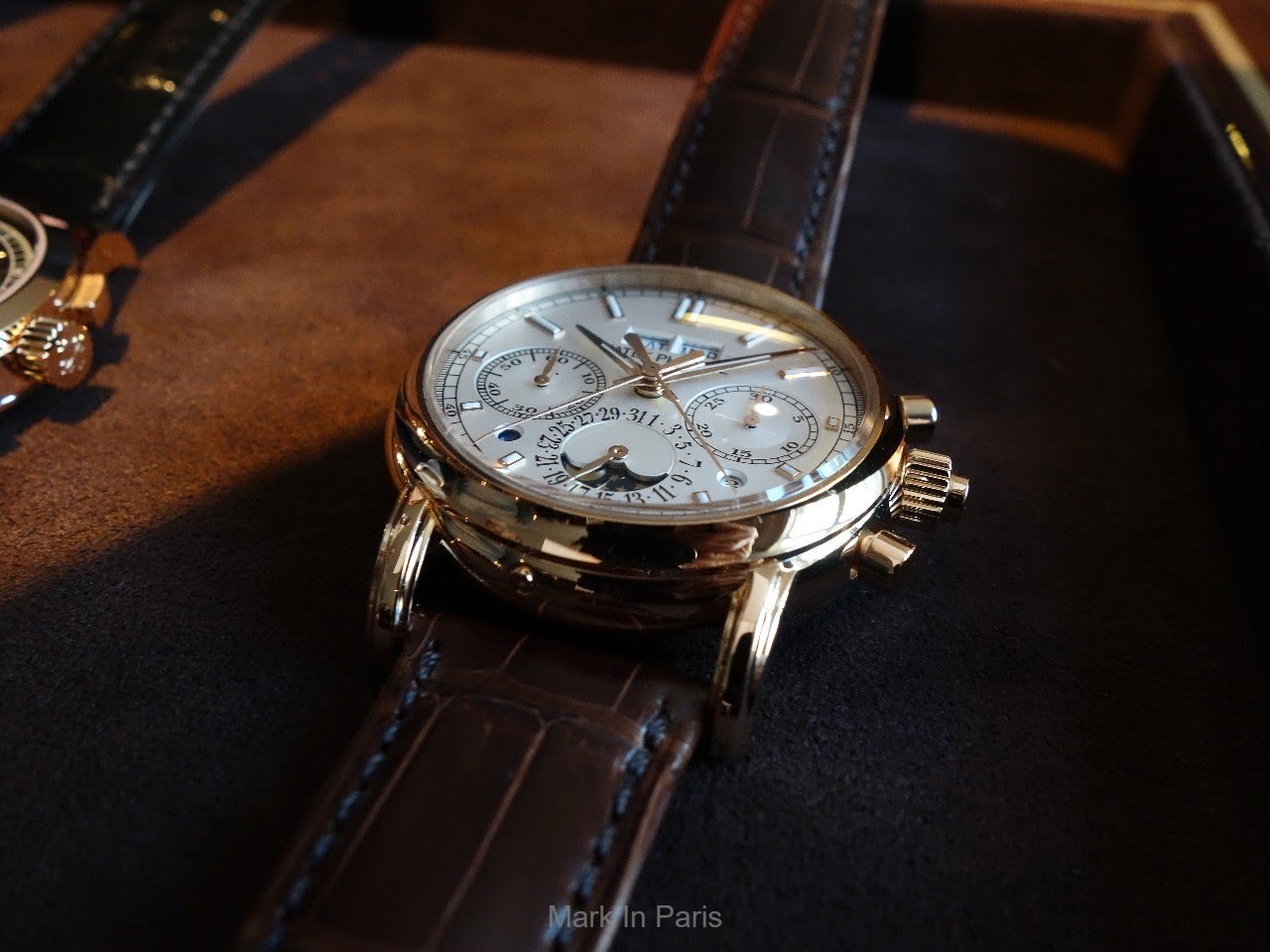
The watch is perfectly proportioned (40mm x 14.2mm case versus 36.5mm x ~14mm for the 5004), especially considering today’s standards, and is kept as small as possible considering the volume it requires for such complications. That is a characteristic that often distinguishes Patek Philippe compared to other brands and that I appreciate very much.
The following picture provides a nice view on the bezel that is clearly participating to make the watch look thinner. Something very welcome for such type of complicated watch.
The 5204R on the right, next to the black dial 5170R from 2016...

The 5204 is also a little more legible than the 5004, and legible full stop considering it has to show the Perpetual Calendar and Chronograph data in the same little room. From the picture here below, you can have an idea of how nice the feeling on the wrist is, as the watch sits well and doesn't look oversized for such a complication.

While on the dial, let’s focus on the hands. This is indeed a shape that wasn’t 100% my type for this kind of more traditional complication display (though I find them totally appropriate for the 5905) and watch spirit. Hence, the fact they here work perfectly with the rose gold material is something I learned from: hands choice isn’t a matter of shape only but also of metal color.

One thing I talked about in the past is the case's profile. We usually overlook that point but shaped cases need much more work (hence time, thus leading to more expensive operations). When considering the diversity of Patek case shapes and their design far from made of plane surfaces and straight sides, you can imagine how important that aspect of a watch is for the brand. You can see here below the wonderful and "sensual" shape of the 5204's case.

In fact, it may depend on the owner. The RG hands bring a little 1940’s touch in this 5204R, in a more traditional way, whereas the white gold hands in the other Platinum versions bring modernity and give the watch a much more contemporary look - at least how I see it, subjectively. Hence, a 5204P will appeal to someone looking for a very complicated watch but that can be integrated on a wrist as an everyday wear in a contemporary style. The RG version is the traditional spirit way, and I imagine that the fact the previous references looked much more traditional and felt like “historical pieces”, explain why I feel more that way.
It doesn’t shout at all, if putting aside the fact it is in red gold of course. By the way, I already mentioned in the past that I find Patek’s rose gold quite lighter and less “red” than what other brands offer. This is much appreciated in the metal.

Otherwise, the dial is decorated with rose gold applied markers with a luminescent coating that is applied to perfection and making a homogeneous picture together with the hands treated the same way.
But this is not all, as often with Patek’s sense of details: you will see from the crops I tried to make below that the luminova coating is very nicely (and quite uniquely from my experience) shaped and applied on the markers: it looks like it is a superior layer, perfectly put and giving a very nice warmth to the marker (versus a more edgy one). I like this detail a lot on the crops I could make on my computer with the original photos and I must add that I didn’t notice this point when I handled them. It is just the kind of nice details that bring an atmosphere to a watch that you don’t know where it is coming from.
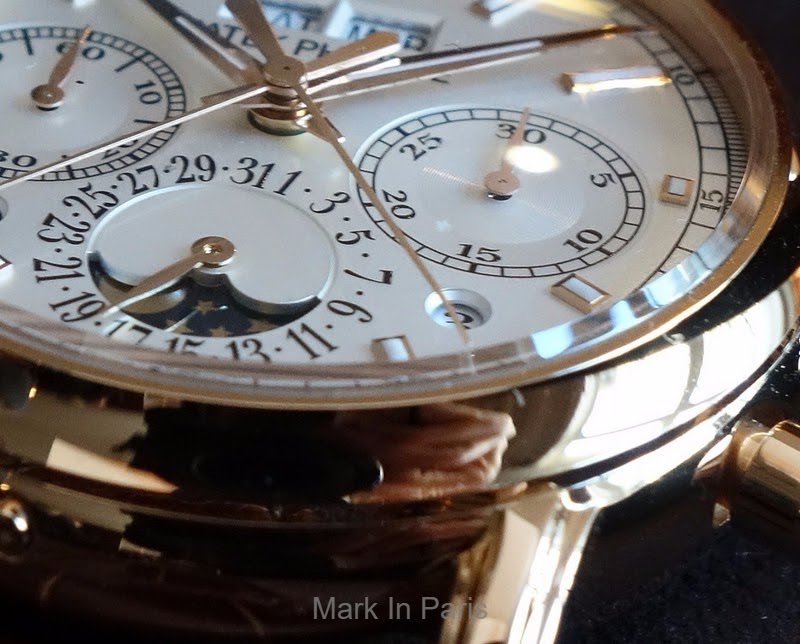

If you remember my 5370P review, the lume decorated hands were already Patek’s choice, which is also a very classical and traditional reference. The confirmation of a trend to merge very nicely I think classical and modern at the same time.
Like the 5230 and 5930 case and lugs new shape bring a little modern touch to the watch’s style in order to make them look less traditional and bring the pieces in today’s world (thus appealing to a younger customer profile), these 5204 hands and markers very tastily bring this same slight touch of modernity to a classical piece. It is a very hard task to perform and I think that Patek did it very well here.
Concerning the style, the test I make myself is trying to put leaf or baton hands for instance back into those watches I could see these last years: I must say, though they would have been nice, they wouldn’t look as fine as they do today. I think that’s a sign it has been cleverly done and will keep up the test of time in the future. Even the late 1940’s traditional style was modern compared to the early 20th century’s design (Louis XV and Louis XVI profiles). Looking at the pocket watches from that period (wrist watches came later, on a larger scale starting from the 1920’s) shows this evolution quite clearly. Of course, I prefer the leaf hands as they are for the 5970 for instance. I guess to each period their own from my perspective.
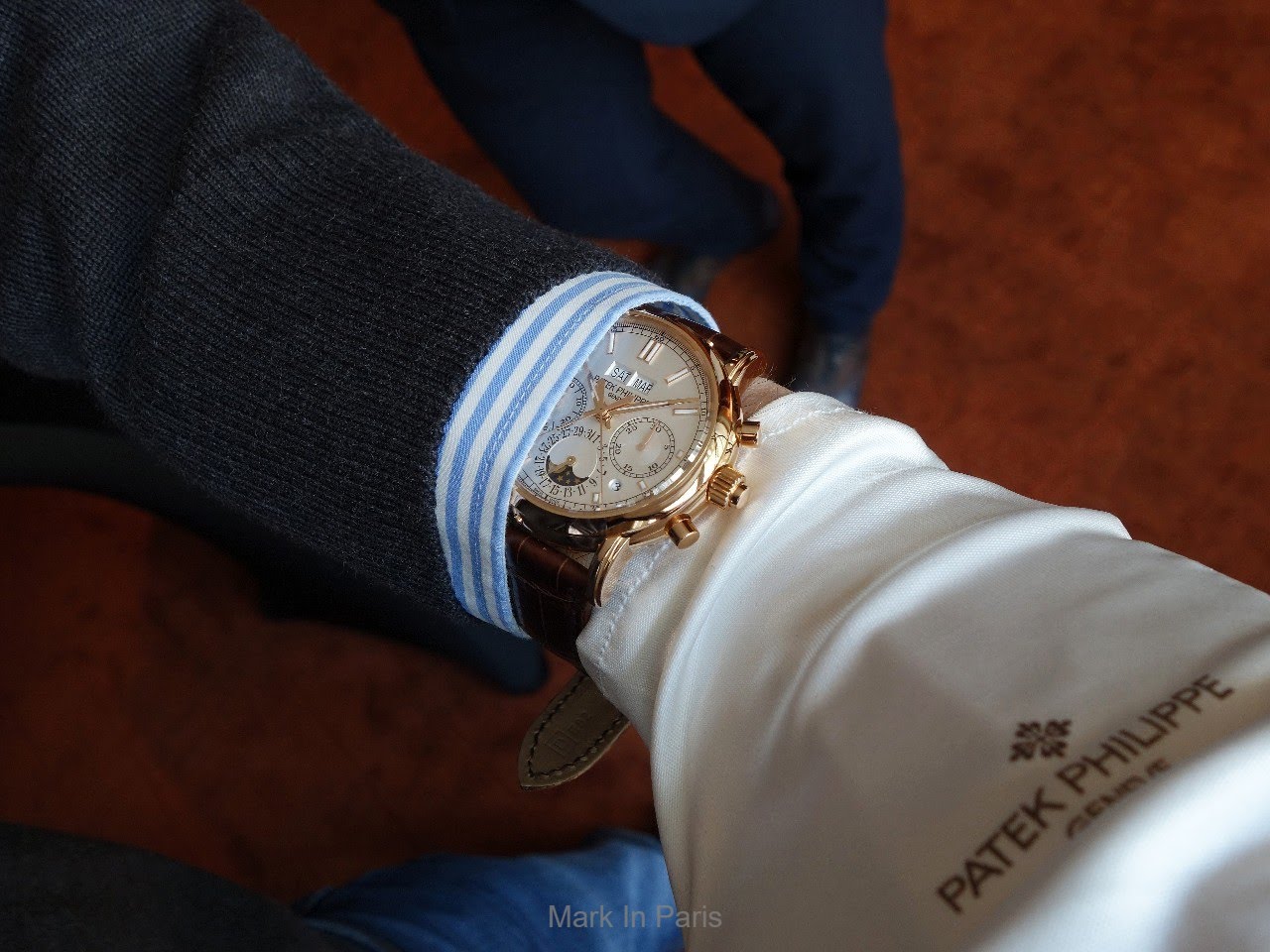
Back to the dial, when the Split function is reset, it is hard to notice it is a Split second complication (the photos were taken before this part). This shows the precision of the hands adjustment.
Finally, there is a little detail I still have a little problem with. Because our tastes are subjectively shaped by our past experiences, I guess it is the reason why I think I’m not used to seeing the moonphase that way i.e. on the bottom half instead of the upper one. I don’t know if it was done for practical and technical reasons but I see the way it is usually displayed like a moon rising in the sky and then setting on the horizon. I guess I’m just too romantic :p
However, that would be my only personal issue; I guess I could get used to it after a while.

If we look at the next elements, like on the 5270, the Day & Night as well as Leap Year indications are displayed via 2 small round windows at 8 and 4 o’clock. This allows lightening the rest of the dial (no additional hands) and makes the chronograph use more legible too.
I’m fond of scales (especially in simple chronographs like the 5170 for instance) and in this case I must say the fact they remain discreet is a good thing. The minute scale is surrounded by the chronograph’s second railway. On such a complicated watch, it allows the dial to look lighter.
Finally, I’m glad the pushers remain “pump it up” type on this reference. I’m not fond of a full standardized collection, like having the same patterns on every watch of a collection. Hence, we have square pushers on the 5170 and 5270 references for instance and keep these different ones on the 5204: diversity of style and spirit, I like that. I feel the same for markers (square or Breguet), hands etc…

While talking about pushers, I’m particularly enjoying the choice of a co-axial monopusher for the Split function as, beside the traditional touch, it leaves the case balanced (versus at 10 o’clock for instance).

THE MOVEMENT
The watch is housing the new CHR 29-535 PS Q caliber. It is a 32mm width and 8.70 mm thick movement composed of 496 parts. The 5004 was 407 parts which can give you an idea of the additional work it has required (please refer to the Appendix in the first answer below for further details).
The power reserve stands at 65 hours (for 28 800 vph) compared to 60 hours (for 18 000 vph) in the 5004, thus showing the improvement in power consumption.
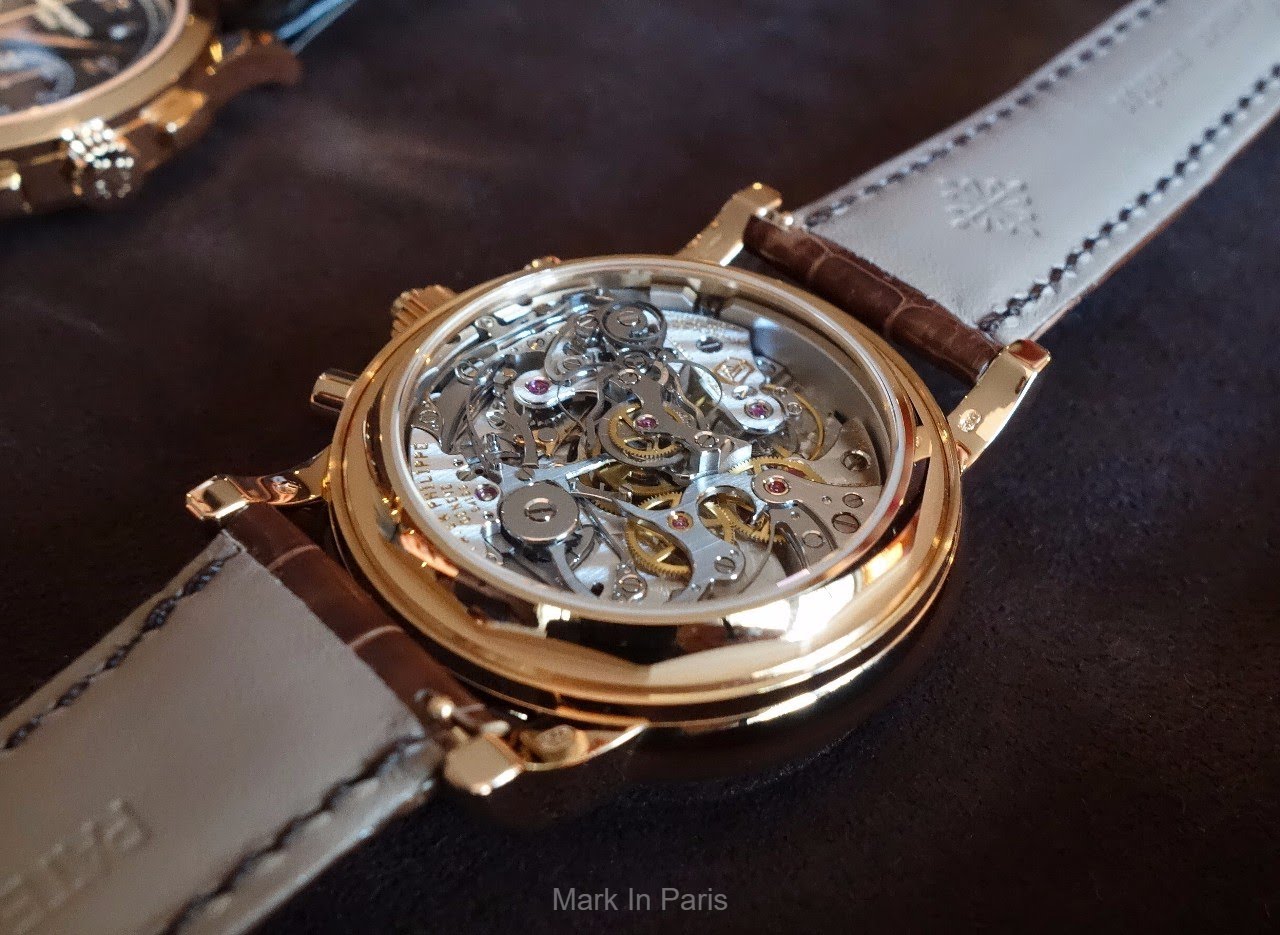
One thing I adore in that caliber and that I already noticed in the 5170 and 5270 is the impressive pushers’ activation comfort and sensation: not too smooth but the perfect sensation. Furthermore, the perfect winding feeling (a major detail for a hand wound watch imho) is another great illustration of how well designed the caliber is. Try them next time you can, this is definitely a great improvement from the CH27-70 that I love as well but find a little too stiff (for the pushers).
I love how Patek’s calibers are decorated and especially because it isn’t overloaded with colors or heavy Baroque forms. It is clean and easy to observe while very homogeneous. I think that it is the kind of refinement I prefer on a traditional movement.
The clamps in the center are elements very recognizable in such a Split-second caliber and this CH 29-535’s beautiful bridge in the middle is what pleases me the most. It is definitely my favorite configuration of this amazing movement base.

You certainly know what a split-second is: a chronograph that is able, with the help of an additional chronograph second hand, to measure intermediary time laps. Hence, it allows the observer to keep the chronograph running (main second hand running together with the minute counter) while being able to stop the 2nd chronograph second hand (“split”) via a new pusher (the one co-axial to the crown on the 5204R), read the time and resume its course buy pushing the start/stop pusher again. This last action makes the hand literally jump from its stopped position to the still running main second hand. Thus the French “Rattrapante” word (“catch-up” in English. Not sauce related).
Practically, you can see on the picture below the clamp used to stop and release the second hand wheel. This clamp is activated via a second column wheel.
Its “split” second hand neutral position is not at 12 o’clock like the main hand but under the latter and, as often for resetting positions, is done via a heart-shaped element.
When the watch was released in 2012, Dje could describe the whole caliber’s design and mechanism engineering. This caliber is a marvel of watchmaking and I thought I could include his presentation if you like going inside such interesting details. You will be able to notice what the brand really brings to watchmaking in a sense that, beyond a rather conservative image, it is not so. Simple solutions and improvements are among the best, especially when taking in to account the fact that micro-mechanics can be fragile and reliability is a major issue for putting up with an everyday life.
Here is what was posted by Dje when the movement was explained to us:

If a chronograph seconds hand is a hand fixed to a wheel (and the consecutive other wheels and counters for the minutes and hours counts) that can be connected and disconnected at demand to the permanent time wheel linked to the permanent seconds hand, the split seconds hand is a hand fixed to a wheel that can be connected or disconnected to the chronograph seconds wheel.
But if a normal chronograph hand can start, stop and reset (or start again without resetting in flyback chronographs), a split seconds chronograph hand can start (with the normal chronograph hand), stop alone (split times) or with the normal chronograph hands, catch up with the normal chronograph hand that was still running or reset with the normal chronograph hand that was stopped.
So the split seconds hand needs a device to stop even if the chronograph is running, but also to catch up, i. e. to re-align itself with a hand in motion (and not reset to 0 like a normal chronograph).
The device used to stop the split seconds hand is a clamp actionned by the second (or split seconds) column wheel seen at 4 below. That clamp (visible below) has the ability to stop the split seconds wheel while the chrono is still running. This is somewhat standard for a split seconds chronograph device.

But this said should lead you to a logical question about the way the split seconds wheel is linked to the chronograph seconds wheel. This is an aspect that is not visible when looking at an assembled calibre, so it's obviously less known and more difficult to understand.
It is a two side device, one being called the isolator and the other one the split seconds heart. They have different functions but both are necessary.

You can see below the split seconds lever. The one on the left is the one of the new calibre CHR 29-535. You can see that this lever acts like a hammer in a normal chronograph function, by pushing on a heart.
In a normal chronograph the hammer pushes on the heart fixed on a chronograph wheel (seconds or minutes of hours, it doesn't matter it's always the same) when the chronograph is reset. The objective is to re-align the hand in 0 position. The heart (the heart form rotating piece) is fixed to the chronograph wheel and turns with it.
When the normal chronograph is reset the chronograph wheel is already stopped and freed from the time wheels (except in fly back chronographs in which the chronograph counters can be reset instantly while the chrono keeps running) and the hammer pushes on the heart to make it turn until the hammer is located at the point of the heart closer to its centre. The hammer has a spring that makes it push on the heart. The hammer is fixed to the base plate and consequently always brings back the normal chronograph wheel(s) and hand(s) to a reference position indicating 0 on the chronograph counters.
In the split seconds chronograph it is all conceived in the contrary side. There is also a hammer to align the chronograph central hand and the split seconds hand but the hammer of the split seconds heart is called split seconds lever. It is not fixed on the base plate in this case but it is fixed on the split seconds chronograph wheel while the heart is fixed on the "normal" chronograph centre wheel. Consequently if the split seconds hand is not stopped and as long as the split seconds lever is pushing on the split seconds heart the split seconds hand is aligned with the "normal" central chronograph seconds hand.
You should have understood now that the split seconds wheel and hand are powered by the "normal" chronograph wheel through the split seconds lever (the split seconds "hammer"). When the chronograph is running and the split seconds hand is running too there is no friction between the split seconds lever and the heart as they are hold tight by a spring and consequently both hands are kept aligned.
Patek Philippe has improved the liaison between this split seconds lever and the heart by giving it a new form as seen below on the left. It cumulates the positive aspects of the two other available options on the right. The round contact point as in the middle allows minimal friction when the lever pushes on the heart to re-align the hand (it is the way it was done in the 5004). The flat side parts as on the right hand side allow a better and more stable alignment, avoiding what is too often seen on split seconds chronographs, two central hands not perfectly aligned and necessitating a larger hand on top to dissimulate the one below. This is the pending patent CH 15991.

Patek Philippe has improved a second aspect for the split seconds device of this new calibre CHR 29-535. The other aspect concerns the isolator. This is the opportunity to explore another side of the not so well known split seconds chronograph calibres.
I've written just above that the split seconds wheel and hand are powered through the split seconds lever applying thanks to a spring on the split seconds heart fixed to the chronograph seconds hand when the split seconds hand is not stopped.
On the contrary when the split seconds hand is stopped (by the clamp) and the chronograph keeps running, the split seconds lever is no longer aligned with the centre of the heart. The heart keeps turning as it is located on the "normal" chronograph wheel while the lever fixed on the split seconds wheel is stopped. That means friction, what is always bad in watchmaking as it decreases the accuracy of the time measure. That means also that if the spring applying the lever on the heart is made not too strong to limit this friction, there is a risk of misconnection between the two central hands when they should be running together.
So how do watchmakers do? They cheat! They "isolate" the lever from the heart when the split seconds hand is stopped while the chrono keeps running.

You can see below the isolator located between the two arms of the clamp. It has three teeth and is linked to the action of the clamp.

And you can see below the split seconds lever applying on the split seconds heart. The two chronograph seconds hands are aligned perfectly.

Below you can now see the brown isolator wheel, fixed to the split seconds wheel but having the mobility to turn of a few degrees from the split seconds wheel.

On the next drawing below the split seconds pusher has been actionned. The clamp has stopped the split seconds wheel (and hand). The isolator has moved and engaged on the isolator wheel, making it turn a few degrees more.

You can notice below (same situation) than the split seconds lever is no longer applying to the heart. A little pin fixed on the isolator wheel has pushed the split seconds lever on the outside.

You can see below the isolator device in its entirety. The isolator wheel and its pin, the isolator teeth pushed by the isolator spring in the form of a swan neck column wheel hat.
In the 5004 the isolator was well known for its octopus form. The new system is thinner as the isolator spring is no longer located on top of the isolator wheel (what was necessitating a thicker pile of wheels). Furthermore in the new construction when the clamp is opened and the isolator goes back to free the isolator wheel, it doesn't do it in opposition with the split seconds lever spring anymore. So there is less tension and a better pusher feeling than with the 5004 (and a better reliability). With the 5004 the octopus can't go back and forth but always turns in the same direction so each movement goes against the split seconds lever spring.

Here is below another opportunity to view the functioning of the split seconds device. The blue clamp is open. The yellow isolator (on top) is not engaged with the yellow isolator wheel. The red split seconds wheel is synchronized with the chronograph seconds wheel as the red split seconds lever applies to the red heart.

Below the blue clamp is tightened. The red split seconds wheel is stopped. The yellow isolator wheel is pushed by the isolator and the red split seconds lever is "isolated" from the red heart.

Just for the sake of it the same two positions with a wider view. First clamp open and hands aligned.

Then clamp « closed » and hands disconnected.

- end of Dje's presentation -
__________________________________________________
CONCLUSION
Now, you know why it is my favorite novelty from 2016 in the end. We are used to seeing quite many complicated pieces when we travel on the net as fan of these micro mechanical objects. But I know that we see them that much because we are a large community sharing and discussing about them a lot. They remain in the end very rare and very exceptional samples of mechanical engineering.
The Patek Philippe 5204 reference is certainly one of the most interesting of these very high-end complicated jewels and obviously the CHR 29-535 PS Q is a landmark in manual wind Split-second chronograph today while being totally in line with the brand’s genes.
Patek Philippe has brought the new generation of Perpetual Calendar Spilt-Second Chronograph in a new generation era without disturbing the brand’s DNA. The brand has shown again its ability to smoothly bring evolutions to an iconic model.
I would be interested in reading about your thoughts on this reference. Not the one we are used to seing often of course but I wonder how you see it?
Best, Mark
You can find additional elements on the official website here: http://www.patek.com/en/mens-watches/grand-complications/5204R-001
Below, the 5204R on the left together with the 2 other novelties from 2016, the 5170R with Black and Silver dials: different ways of designing a chronograph (pushers, dial, scales, bezel, case, hands...)
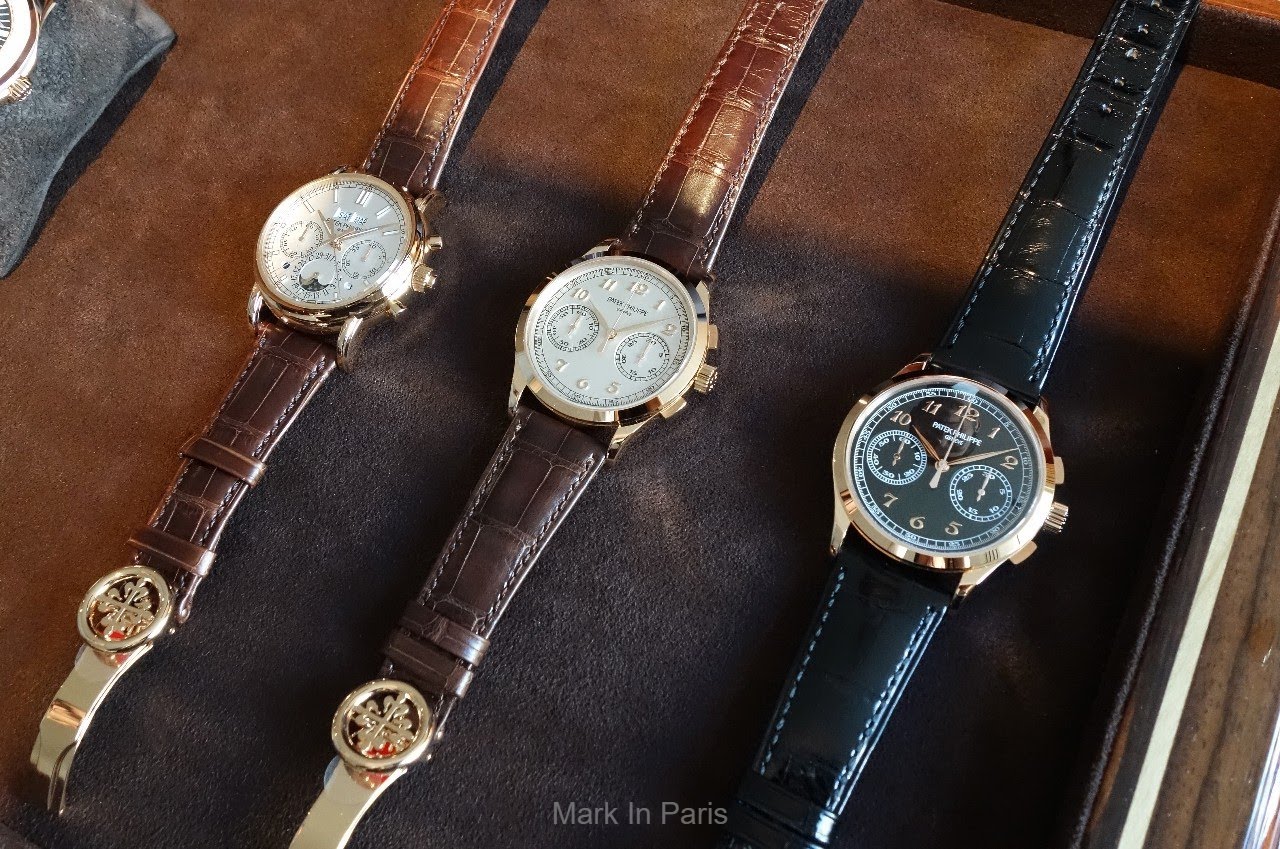

The 2016 Patek Philippe 5204R hands-on review

Very attractive timepiece.


Thank you for such a detailed review.

Very tempting indeed

Mark, you did it again.

see it that way: you have got the "eternity" to measure and also to measure some very fleeting moments of split seconds in one "tool"

I have this debate with myself a lot....

Indeed a very nice project to bring forward

I'm glad you liked it Kari

As you know Mark,

Yes, I remember and nearly mentionned it in my reply :)

Thanks mark lots of info to digest

I often myself read through a post many times when I feel like to

Mark I am speechless.

My pleasure Miles :)

Thanks ! A great read


Thank you!

This is the knid of dilemma I have with 5270 versus 5970

Well Mark, you let me speechless. Your post is so detailed and it helps me (us) to learn many things about these beautiful PP. Very impressive

My pleasure Alkiro :)

My pleasure Mark ;-)
Thank you

Good question

Unfortunately not...

Good to know

Mark,You are challenging yourself here

Not trying is a way to avoid temptations!

We have similar approach

Mark, many thanks for this wonderful review of this really fantastic reference

Thank you for the feedback Dom
Great great review

It seems we are a few to feel like this about the 5204R indeed

There are posts, and there are posts. This is certainly the latter.

I love it all as you know

Manual versus automatic for a PC...
Fantastic report Mark. This is a very special watch that needed a special review, which you achieved as always.

They have quite a wide diversity of shapes...

Hi Mark, thank you for such a detailed review !

My pleasure Gordon :)

Very enjoyable post Mark.

You're right, it is a very well designed piece

Fantastic report

My pleasure!

Thank you dms!
Great Review

Thank you Vwong

Could have been...........


What do you think?

I have a few answers
Thanks for your comments


Phenomenal write-up!

That's an important point indeed.
5959R

I will if I can see it one day


